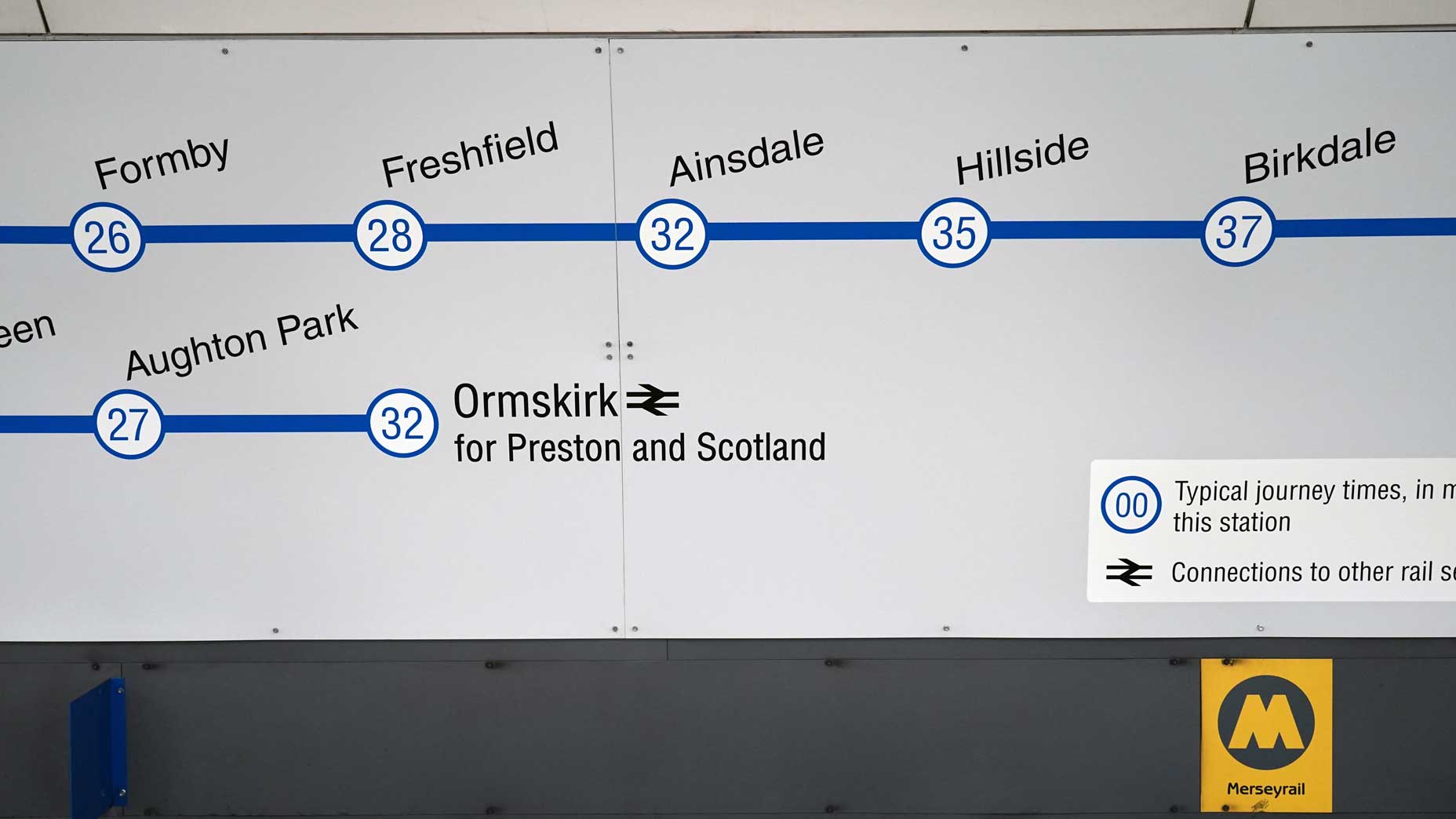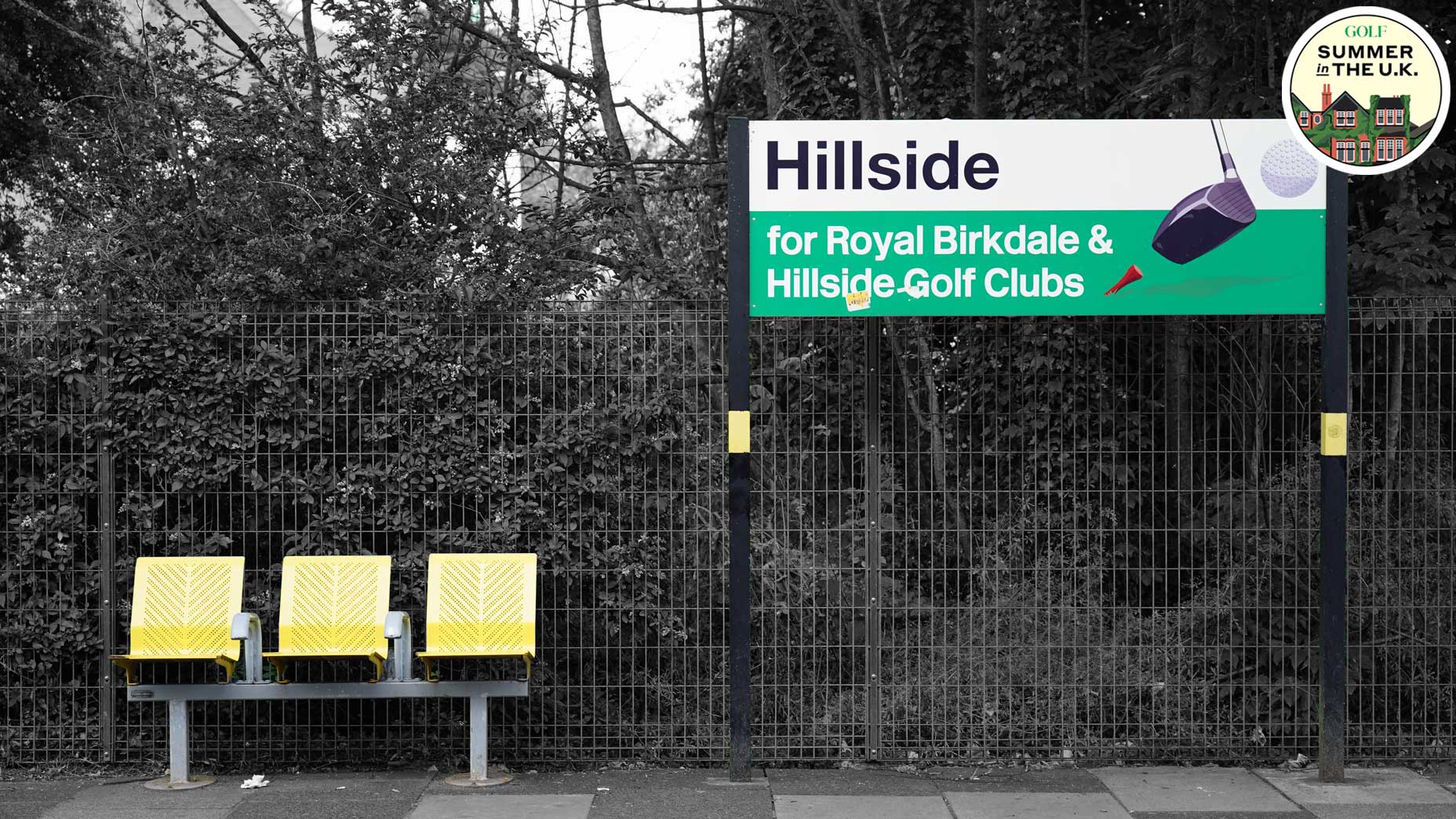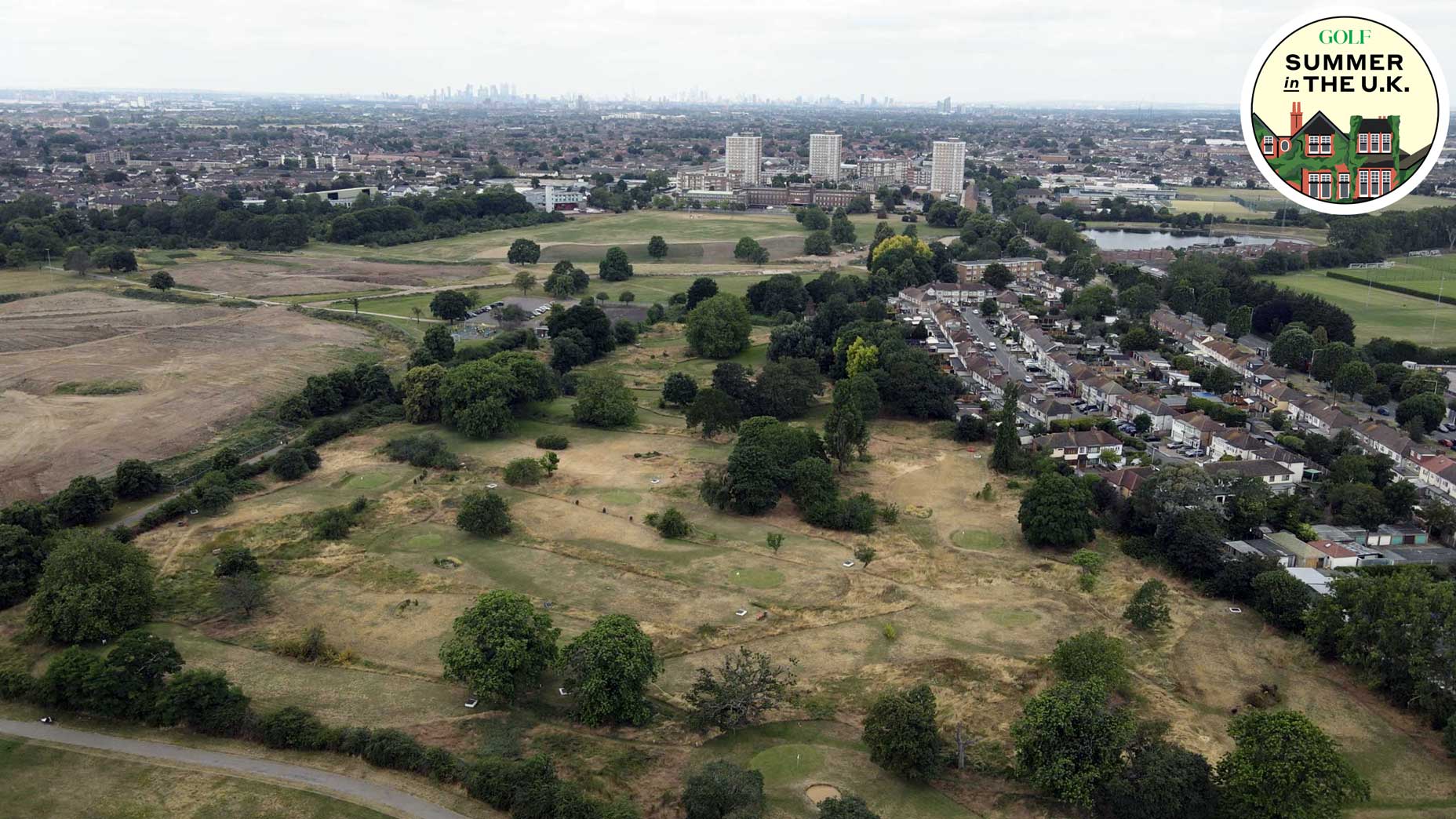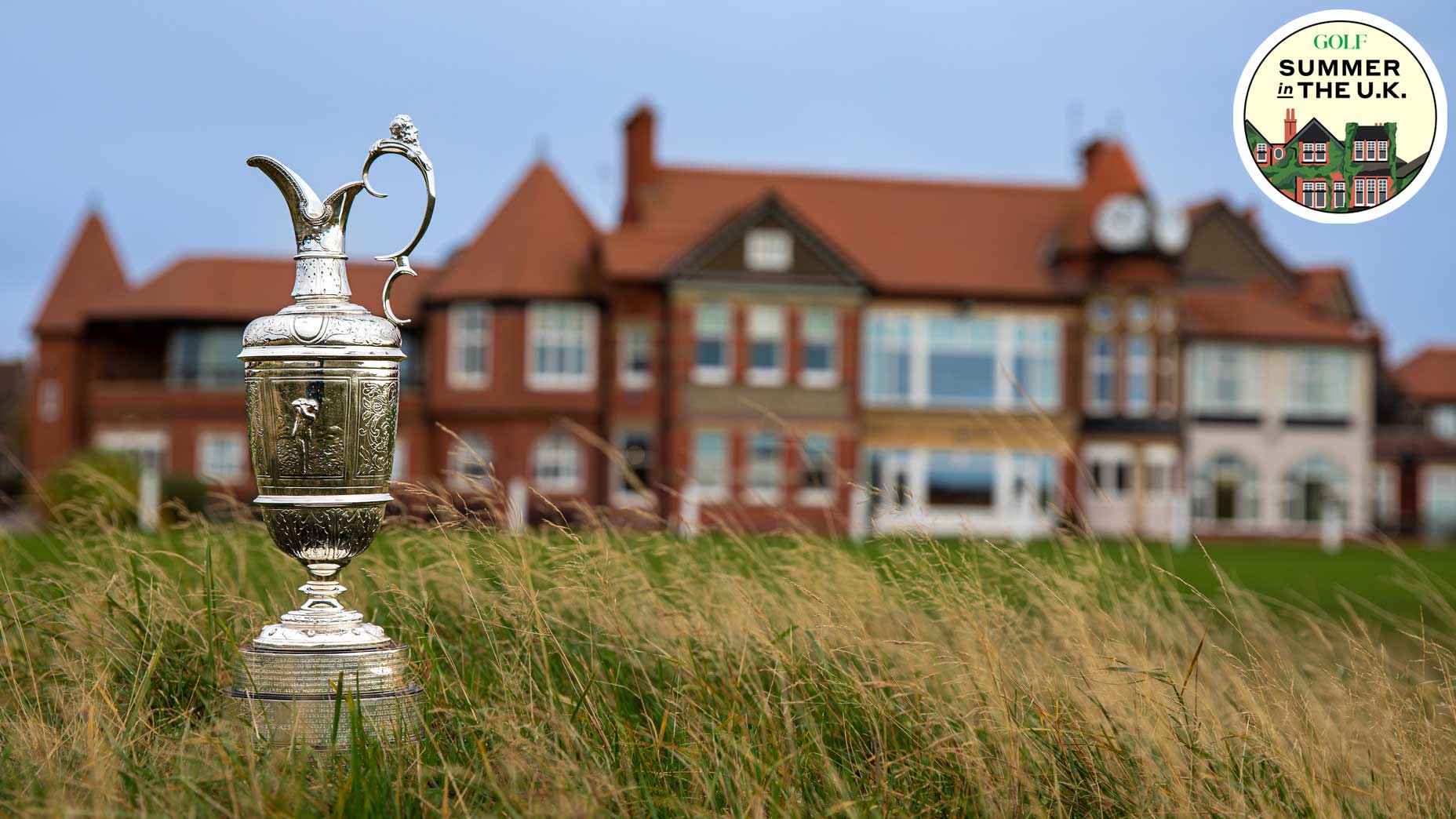Tommy Fleetwood wasn’t exactly jumping out of his seat to see me. I found him with his head buried in his phone, at the end of a locker room corridor at Oakdale Golf and Country Club, host of last month’s Canadian Open.
“You are just the man I’ve been looking for,” I told him.
“Me? What for?” he said, pulling his gaze up.
This was during the weirdest week on the PGA Tour, and players had grown reluctant to speak with golf writers. But I wasn’t here to ask Fleetwood about any of the shocking PGA Tour-PIF news, or even about his second straight round of 70. Rather, I wanted to know about trains, and specifically the train stations that get you near some of the best courses in the world, on England’s golf coast. That was a topic he was happy to chat about.
Fleetwood knows the train life well, growing up in Southport, the final stop on the Northern Line of the MerseyRail tracks that slither through Liverpool. He even explained how he used to connect through three different stations — Goosetrey to York to Howden, he said — just to see his short game coach.
“Yeah, my dad loves trains,” Fleetwood said, before feverishly drawing up an itinerary for me. “There’s Ainsdale, Hillside, Birkdale — you could do all three…”
He paused for a beat.
“…which would be mega.”
The Great American Golf Trip Across the Atlantic (trademark pending) has become, like many things in this recreational sport, an industry unto itself. There’s the summer season, when demand crests and where bed and breakfasts institute special prices. There are the private shuttle drivers hired for juicy, cash tips — so long as they rush travelers from course to course to hotel to course to course to B&B, 36 holes a day and two or three pints along the way. There are orchestrated tours that you can hand-pick off a platter.
Oh, you’d like the Scottish Highlands Experience with a taste in Fife? And you’d like a helicopter to lift you to Aberdeen? Okay, remind me of those three digits on the back of your credit card…
What’s hidden in those above words from Fleetwood is the fact that a much more convenient, affordable, relaxing, old-school, historic, scenic way of playing some of the best courses in the world is waiting for you via train. It begins with a flight into Manchester and a quick ride to Liverpool. At the bottom of a 100-foot escalator at Liverpool Central Station are two railway options, the Wirral and the Northern lines, which run every 15 minutes, from 6 a.m. until midnight. (They’ll be running twice as often during Open week.)
The last two stops on the Wirral Line are West Kirby and Hoylake — you’ve got your pick of two beach towns! — and neatly tucked between them (walking distance from both) is Royal Liverpool Golf Club. It’s one of the 100 best courses on the planet, and this year’s host of the Open Championship. Rory McIlroy is on their mind.
Twenty minutes in the opposite direction — you’re on the Northern Line now — is Hall Road and West Lancashire Golf Club. It was at Hall Road where I whipped around at the sound of a familiar voice. That booming Scouse accent of Fleetwood’s caddie, Ian Finnis, was talking to one of his neighbors. He lives just off Hall Road, near the gates of “West Lancs,” as the course is known. He wore a backpack and balanced his duffel bag atop a rollaway carry-on and was somehow not too zapped off his missed-cut redeye to offer up a couple of beers in the backyard.
As it turns out, West Lancs somehow isn’t ranked in this publication’s Top 100 Courses in the U.K. and Ireland, and I think that would upset Finnis. It must be just on the outside looking in because everyone I’ve talked with — from Tour pros to caddies to media members and course raters — seemed to either highlight it as their favorite of the area, or at least the most difficult, as its heavily exposed to the winds off the Irish Sea. Every time someone brings up the idea of a round at WLGC, it is preceded by two words: Good luck, delivered with the implication of You’ll need it.
Two stops away on the Northern Line is Formby, a town of 22,000, but golfers by train should only glance at this town through their windows. A pro-tip I learned the hard way: stay on board to the Freshfield stop, whose platform is so close to Formby Golf Club, you could literally throw a golf ball to the 1st tee. The first three holes of FGC run along the tracks and make a large, circular loop around the property. The underrated, though not to be forgotten side dish, Formby Ladies Golf Club, is tucked in the middle.

An entire book was written about golf by train — Links Along the Line is its name — detailing how the sport couldn’t have grown in Lancashire in the way it did without the railway, and how the railway couldn’t have been nearly as popular in this area without the golf courses pulling people in that direction.
First came Royal Birkdale, in 1889. Next came Southport and Ainsdale, in 1906, and then finally Hillside Golf Club in the early 1910s, plopped right between them, the opposite side of the tracks from S&A. All three are accessible from Hillside Station, though Ainsdale Station will naturally get you closer to the Ainsdale course.
It’s nothing more than a 10-minute walk from Hillside to Royal Birkdale, during which its pearly white clubhouse, designed to look like a ship, seems to get more and more imposing with each step. But on Mondays, Wednesdays and Thursdays, guests are treated like members. Which is to say, they’ll greet you at the door and explain how arriving via train is exactly how Seve Ballesteros showed up to the 1976 Open Championship at Birkdale. That 19-year-old version of Seve led for 59 holes that week before Johnny Miller shot 31 on his winning back nine.
The course itself? Fantastic. You get lost in the dunes with occasional peeks at other holes, bending toward the wind and away from it, at the clubhouse and away from it. At any given point you feel out there, a nice contrast to some links courses that are so flat that the holes seem indistinguishable and the journey through them less memorable. It’s not shocking that Birkdale has hosted a stunning 10 Opens in the last 70 years. Only the Old Course has hosted more during that span.
Birkdale’s neighbors put on the party recently, with Southport and Ainsdale co-hosting the Amateur Championship with Hillside. S&A may not have all the dunes that Birkdale has by the coast, but it’s hard to find a course that more promptly tells you where to go. You see this spot between the bunkers, short of the narrow fairway passage? Find it and you’re all good. Fail… and a lot more can happen. Some of it not good! The 529-yard 16th, which asks for less than driver off the tee, a mid-iron layup and a wedge into a wild green felt like the fairest, most true three-shotter I’ve ever played. It came at a great time for me, too, at the tail end of a truly horrific display of ball-striking. One of those rounds where your play is so deficient you have to work hard to keep it from tarnishing your opinion of the course beneath your feet.
As we putted out on 16, a southbound train whizzed by through the trees. I’d be on the next one, experiencing one of the best aspects of this unique way of golf travel: the quiet return home. The 30-minute decompression session that comes mandatory on golf by train is just enough time to parse out the birdies and the bogeys and the triples. Rather not talk about it? Feel free to stare off into the blurred colors of the countryside. Need to make a phone call or catch up on email? Now’s a great time. As for me, I couldn’t help but chart my return to decent golfing form: an inland visit to a town called Leeds and the first course Alister MacKenzie ever designed. Two hours by car, maybe more. Ninety minutes by train, maybe less.




